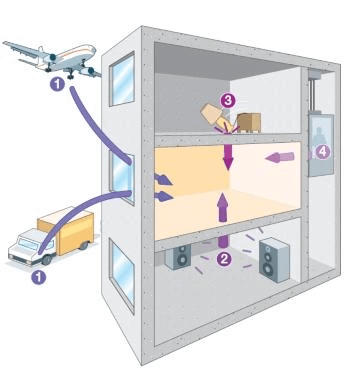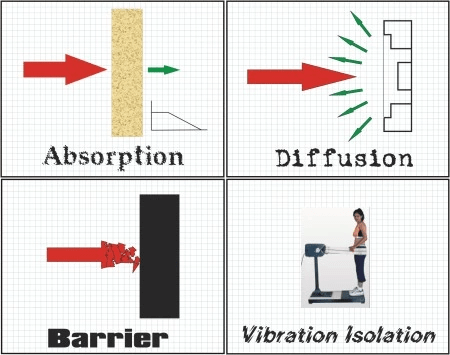Why Acoustics Matter In Homes And Buildings – Architectural Acoustics
Constructing new buildings – be they homes, schools, office towers or industrial workplaces – has become an increasingly sophisticated exercise. We know more today than ever before about the importance of building structures that are energy-efficient, safe and comfortable for occupants. Creating these high-performance buildings begins at the planning stage with design professionals and technical experts who consider all the factors that go into making spaces perform as they are intended – whether optimizing productivity for office workers, quiet recovery areas for patients, good acoustics in learning environments for students, or any number of other examples to bring the acoustical properties of a space in line with its intended use.

One of the factors that often gets overlooked at the planning stage is acoustics, yet the acoustic environment of a building can have a significant impact on the occupants’ experiences. For example, research has established that sound can negatively affect health and recovery periods in hospitals. Design trends that are driving the creation of open workspaces for collaboration may also have the effect of decreasing privacy and productivity. Construction practices and products selected to meet sustainability goals may, at times, inadvertently sacrifice the ability of a space to deliver occupant comfort by decreasing unwanted noise.
Considering the acoustic needs of a building at the start of the planning process can help save time and money by reducing the need for renovations or retrofits once construction is completed. Within this acoustics article series, we focus on rethinking the role of acoustical design and engineering. Increasing awareness and understanding of acoustics among industry professionals, including architects and designers, building owners, as well as the general population, will only help drive this shift. Occupants of these high-performance buildings will continue to demand that sound be a key consideration in new construction.
Creating a built environment with good acoustics includes controlling noise pollution. Exterior sounds can infiltrate a building affecting the acoustic environment for its occupants. Building system noise and occupant noise can transmit through the building affecting functionality. The best way to control this noise pollution is with a “source-path-receiver” model – identifying strategies at each point of sound transmission that can reduce the impact of the sound.
This concept for architectural acoustics design may be simple to understand, but it is often difficult to apply. For example, road traffic noises outside of a building are out of the control of architects and other construction professionals. Likewise, noise pollution would not be a nuisance in an empty building where there is no “receiver” to hear the sound. The most effective approach for architects, then, in managing noise pollution in a building’s acoustic design is controlling the sound path.
Acoustica Projects provide effective components in your designs and assemblies which will contribute to controlling sound at the path, including:
Control over vibrations – high-density stone wool has proven acoustic capabilities that allow it to isolate and control vibrations, thus efficiently absorbing sound and reducing noise Installation of barriers, panels, or enclosures – for example, weather stripping (which stone wool can be used for) and double-paned windows Control in the transmission path – stone wool insulation acts as an intervention in the path between source and receiver

Looking for help in planning an optimal acoustic environment?
Good acoustics design is based on a strong foundation of technical knowledge. Building design and construction professionals, as well as homeowners, can look to Acoustica Projects for the services and solutions to help meet the desired specifications and outcome of a project.
Our technical support team is ready to work with you in evaluating whether an assembly would satisfy the noise level reduction you are trying to achieve. We’ll also provide you with a recommendation on the right acoustic solutions for your specified requirements. Consider us a partner in your next project.
Get in touch with Acoustica Project. We can handle all your soundproofing needs.
Call us 1300 498 268
Email us – enquires@acousticaprojects.com.au
Source : rockwool

